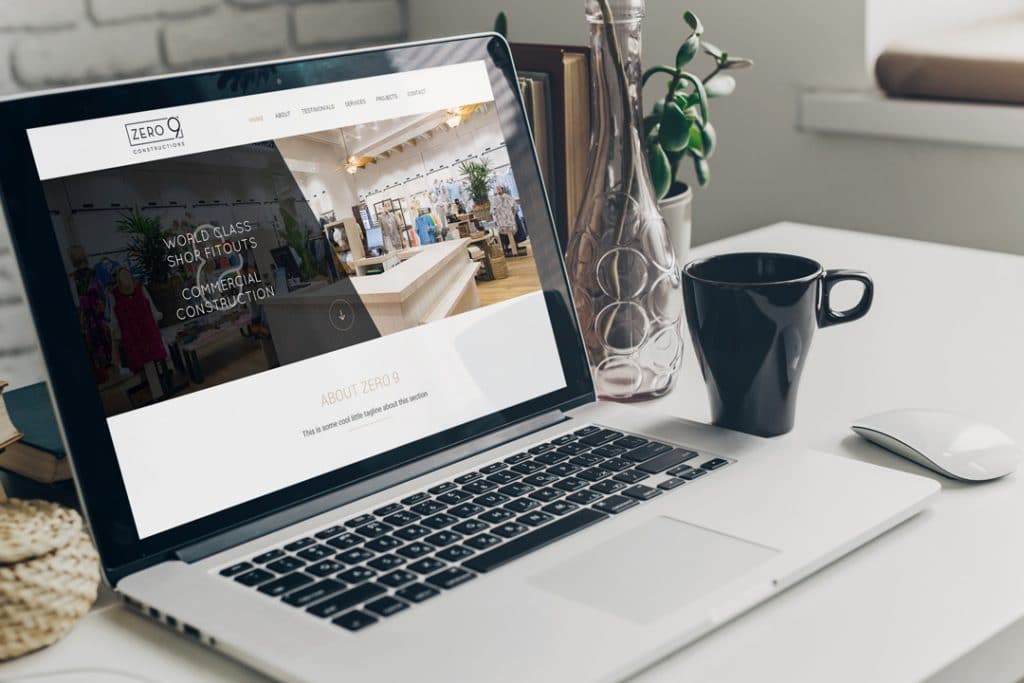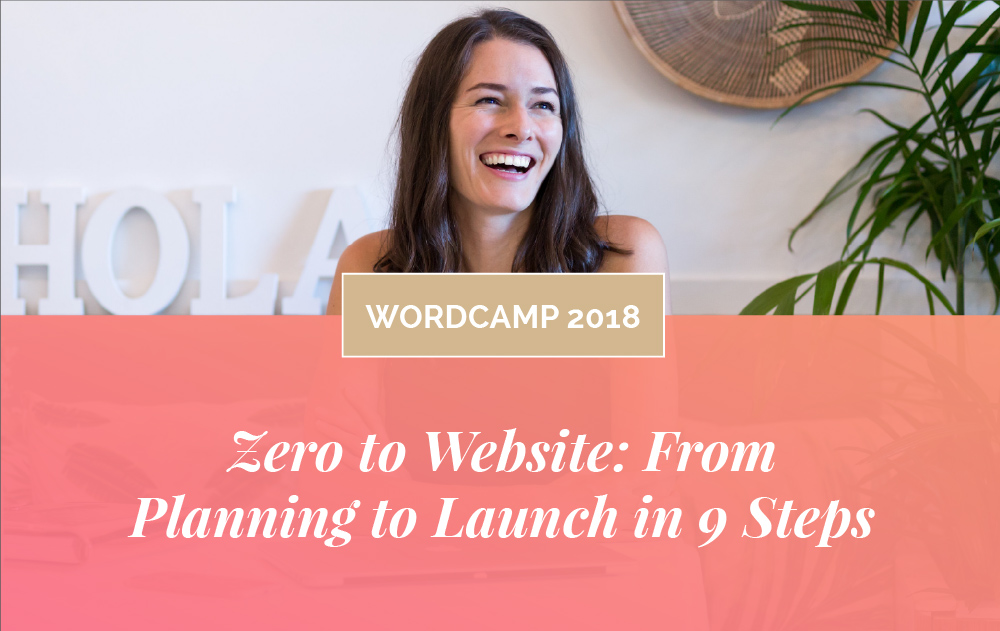Tips For Creating An Awesome Small Business Website
I’ve put together a few tips that I think every small business website could benefit from. Whether you’re an accountant, personal trainer, marketing consultant, restaurateur or even a unicycle enthusiast, these tips will work for you.

Website designed and built by Hola for Zero 9 Constructions Gold Coast
1. Don’t put your email address on your website
Wait. Hold up. What?
Ok, let me explain. I’m not saying that you shouldn’t include any email addresses on your website. It’s just best not to include your main one. You know, the one most clients contact you on, the one that makes your phone beep every few minutes.
The reason for this is that emails listed on your website tend to attract spam, sometimes a lot of spam. Although there are expensive applications available to minimise spam emails the occasional one is unavoidable. I recommend setting up a separate email specifically for your website. For example, my email address, [email protected], is only on my website. I don’t give this email to my clients and don’t include it on my business card. This allows me to keep my important emails from clients separate from the less urgent, occasionally viagra-sprooking emails received via my website.
2. Pick between .com.au vs .com
Many clients ask me what the difference between the two is and which is best for their business.
In a nutshell, it comes down to where your customers are from. If you’re an Australian business selling to Australian customers then a .com.au or .net.au domain name is for you. Unlike the .com, .net and .co domains, .com.au and .net.au domain names have stricter regulations which require the owner to have an Australia Business Number (ABN) in order to register the domain. Australian consumers can trust these domains more because the .au extension implies that you’re an Australian business. They also rank higher on Australian search engines such as Google.com.au.
If you’re a global business meaning you sell to customers all around the world or have the intention to expand to this level, then a .com .net or the funky .co is the way to go. You should then also consider registering local domain names for each country you want to sell to. For example, if you hope to have customers in Australia, New Zealand and the UK you should register .com.au, .co.nz and .co.uk as well.
An important thing to note is, as .com, .net and .co domain names can be registered by businesses all around the world, the ideal domain name for your business might be harder to come by than the local domain name would be.
3. Go for a light coloured website
Statistics show that lighter coloured websites convert more traffic than darker ones. Where possible have as much text in black or a dark colour on a white or light background and not the other way around.
If you stop and think of the most memorable logo and branding of iconic brands such as Apple, you will notice they all follow this principle, and not just on their websites.
4. Give people a clear way to make contact
Sure, this is a no-brainer, right? Well, as someone who has worked on website designs for a long time, I can tell you that as simple as this principle seems it’s one that often falls by the wayside.
Small business owners will spend hours on web design and logo design but seem to forget that it doesn’t matter how pretty a website is if it’s hard for people to know how they can contact you.
It’s important to put any relevant contact details you’d like potential customers to know on your website. But it’s also important to give people a bit of direction as to what the best way to contact you is or what the next step should be. For example, if you run an online business, it’s probably not a good idea to put your address on your website. You don’t want people thinking they can just rock up on your doorstep and expect to make a purchase or work with you.
Another boo-boo I regularly see are businesses putting too many contact numbers on their website. It’s important to give people a clear idea of what they should do. Presenting them with two phone numbers just forces them to make another decision. Remember K.I.S.S. You want to make the entire process of dealing with your business as simple and effortless as possible.
Remember to ensure your phone number is clickable on mobile devices and also if you’re communicating to an international audience, you should make sure your phone number has an international area code.
5. Make navigating your site simple
According to digital experts HubSpot, if someone reaches your website via a referral they will immediately seek a navigation menu to orient themselves. Some graphic designers can get a little too caught up in making things ‘pretty’ on a website and often forget that the average layperson won’t necessarily appreciate the intricacy of their work. They see a website as a means to an end, with the end having their problems solved.
As a small business owner, you know that competition is rife, so if a potential customer ends up on your website you need to make sure the navigation is fool-proof. From the moment that they enter your website, you need to herd visitors from browsing to completing a form, contacting you or making a sale—whatever the goal of your website is.
All the carousel navigation and hamburger menus in the world won’t count if users are turned off by it.
Always think about your end user!
6. Tell us how good you are
People are inherently distrustful of advertising and we don’t just believe a business’ claims unless they can back them up. This distrust does not discriminate and is present in pretty much every form of paid advertising. So what’s the best way to combat your potential client’s scepticism and make them believe once and for all you are in fact The Bee’s Knees? Testimonials!
The referrals of others are considered more reliable than whatever you as a brand can promise. If you’re doing your job right, you will have happy clients that can vouch for you. So why not promote these awesome testimonials on your website—and Facebook page, and eNewsletter? Sometimes one small simply-worded recommendation from the right person can produce more leads than pages worth of self-promoting horn-tooting could!
Wanna check out some websites that put these tips into practice? Take a squizz at our portfolio here!
About the author
Hola! I'm Emma. I’m a graphic designer turned web designer on a mission to teach others how to build beautiful & professional websites with WordPress. Through mentoring and my eCourse I teach other graphic designers and entrepreneurs how to build their own websites using my 9-step process. In my spare time I love writing about my freelance life, creating pretty things and hanging out with my fur-baby.
Say Hola!
Don’t be shy. Want to say hi and have a chat? Get in touch and let's start the convo about your exciting new project.
Drop us a line
Don’t be a stranger, send me an email via the Interwebs to have a yarn about your upcoming design or website project.
Get started
So you've website stalked me and like what you see? Shucks! I'd love to hear more about your project and how I could help.
Support
Is your website misbehaving? I can provide comprehensive support to get you up and running in no time.



